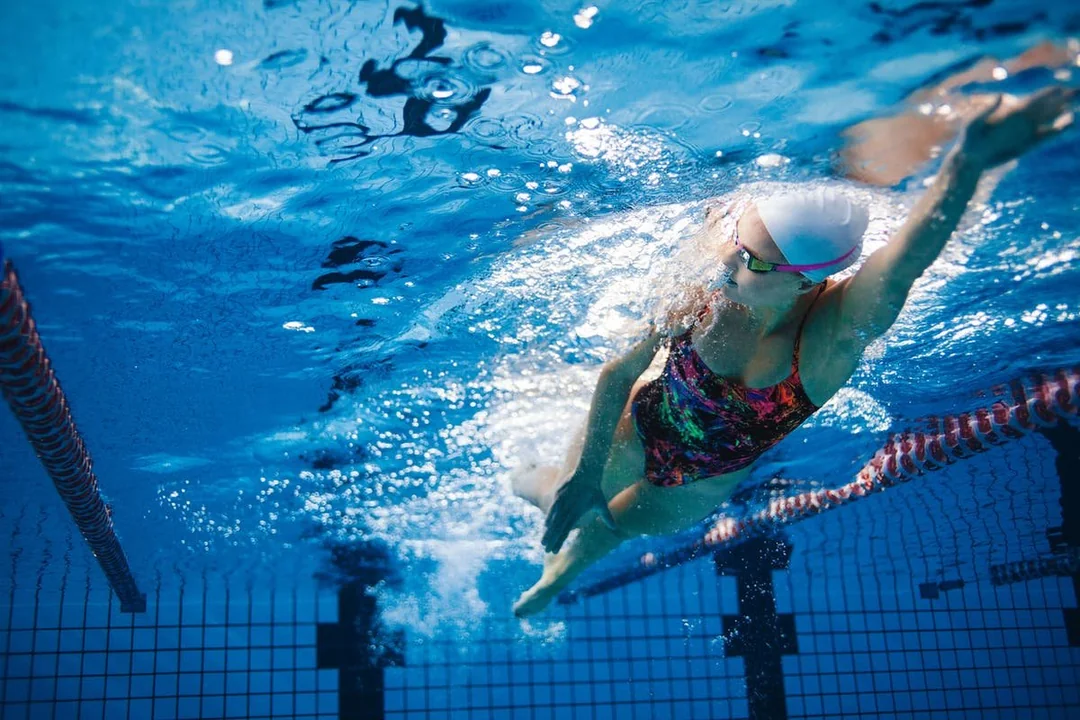Swimming can be a rewarding and enjoyable activity, but for beginners, it often comes with challenges such as finding the right gear, mastering essential techniques, and building confidence in the water. This article provides practical insights and actionable tips to help you navigate your swimming journey effectively. From selecting the appropriate equipment to developing skills that enhance your comfort and safety, each section is designed to address common concerns and promote a positive swimming experience. Whether you’re looking to improve your technique or stay motivated, this guide will support your growth as a swimmer.
In this article you will find:
Choosing the Right Swim Gear for Beginners
Embarking on your swimming journey can be both exciting and daunting, especially when it comes to selecting the right swim gear. The right equipment not only enhances your performance but also significantly contributes to your comfort and safety in the water. Here’s a comprehensive guide to help you choose the essential swim gear tailored for beginners.
Swimsuits: Comfort Meets Functionality
Your swimsuit is your first line of defense against the water. As a beginner, it’s essential to choose a suit that allows for free movement and fits snugly without being restrictive. Look for the following features:
- Material: Opt for swimsuits made from durable and stretchy materials such as Lycra or spandex. These fabrics allow for flexibility and comfort during your swim.
- Style: Choose a style that makes you feel confident. One-piece swimsuits provide great coverage, while two-piece options offer more freedom of movement.
- Fit: Ensure your swimsuit fits well. It should be snug but not too tight, allowing you to swim freely without discomfort.
Goggles: Clear Vision Underwater
Swimming goggles are vital for protecting your eyes from chlorine and enhancing your visibility while swimming. When selecting goggles, consider:
- Fit: Try different styles and sizes to find a pair that fits comfortably without leaking. Look for adjustable straps for a secure fit.
- Lens Type: Choose between clear lenses for indoor swimming or tinted lenses for outdoor pools to reduce glare from the sun.
- Anti-Fog Coating: Many goggles come with an anti-fog coating that helps maintain clear vision throughout your swim.
Swim Caps: Keeping Hair Dry and Streamlined
A swim cap is not just a fashion statement; it serves practical purposes too. Here’s why you might want to invest in one:
- Hydrodynamics: Swim caps reduce drag, allowing you to glide through the water more efficiently.
- Hair Protection: They help protect your hair from chlorine damage, keeping it healthier in the long run.
- Visibility: Brightly colored caps can enhance your visibility in the water, especially if you’re swimming in open water or during a group session.
Fins: Improving Technique and Strength
As a beginner, using swim fins can significantly enhance your training experience. They help you develop a better kick and improve your overall technique. Here’s what to consider:
- Size: Choose fins that fit comfortably and allow for natural movement. They should be snug but not overly tight.
- Blade Length: Shorter blades are ideal for beginners as they help in developing strength without overwhelming you.
- Material: Look for flexible materials that provide comfort while allowing you to kick effectively.
Other Accessories: Enhancing Your Experience
While the essentials are crucial, some additional accessories can enhance your swimming experience:
- Kickboards: Useful for practicing your kick technique, kickboards provide support as you build your leg strength.
- Pull Buoys: These help improve your arm strength and technique by allowing you to focus on your upper body while keeping your legs afloat.
- Water Bottle: Staying hydrated is essential, so keep a water bottle handy during your swim sessions.
Choosing the right swim gear is an important step in your swimming journey. With the right equipment, you’ll feel more confident and comfortable in the water, making your learning experience enjoyable. As you progress, consider upgrading your gear to enhance your skills further.
For more information on swim gear and accessories, check out Scuba Scribbles for expert advice and recommendations.
Essential Swimming Techniques for Newbies
As a beginner, mastering essential swimming techniques is crucial to ensure not only your safety in the water but also to make your swimming experience enjoyable and effective. These foundational skills will help you build confidence, improve your efficiency, and foster a love for swimming. Let’s dive into the key techniques every newbie should learn.
1. Breathing Techniques
Proper breathing is fundamental to swimming efficiently. Here are some techniques to help you master this skill:
- Bubble Breathing: Start by practicing in shallow water. Inhale deeply through your mouth, then exhale through your nose while your face is submerged. This helps you get comfortable with breathing while swimming.
- Side Breathing: For strokes like freestyle, practice turning your head to the side to breathe. Keep one ear in the water and rotate your head just enough to inhale, then return your face to the water to exhale.
- Rhythmic Breathing: Establish a breathing rhythm that complements your strokes. For example, in freestyle, you can breathe every two or three strokes to maintain a steady flow.
2. Floating Techniques
Learning to float is a confidence booster and a critical skill in swimming. Here’s how to practice:
- Back Float: Lie on your back, spread your arms and legs, and let your body float. Keep your hips up and relax your neck. Practice this until you feel comfortable and stable.
- Front Float: Extend your arms in front and keep your body horizontal in the water. Focus on breathing steadily while maintaining your position.
3. Kicking Techniques
Effective kicking helps propel you through the water. Focus on these kicking techniques:
- Flutter Kick: This is the most common kick used in freestyle and backstroke. Keep your legs straight but relaxed, and alternate kicking from your hips rather than your knees.
- Practice with a Kickboard: Using a kickboard allows you to focus solely on your kicking technique without worrying about your arms. Keep your body streamlined and practice short, quick kicks.
4. Arm Stroke Techniques
Your arm strokes play a significant role in propulsion and maintaining balance in the water. Here are some techniques to get started:
- Freestyle Stroke: Extend one arm forward while the other pulls back, keeping your elbow high. Rotate your shoulders as you stroke, and remember to breathe as you turn your head.
- Backstroke Technique: Keep your arms in a continuous windmill motion. Your thumb should enter the water first, followed by your pinky finger. Maintain a neutral head position to keep your body aligned.
5. Turning and Stopping Techniques
Knowing how to turn and stop efficiently is crucial for safety and improving your swimming efficiency:
- Flip Turn: As you approach the wall, take your last stroke, tuck your knees into your chest, and perform a somersault. Push off the wall with your feet to maintain your momentum.
- Safe Stopping: To stop safely, swim towards the edge of the pool and reach for the wall with your hands. Use your arms to pull yourself up and out of the water.
As you practice these essential swimming techniques, remember that consistency is key. Regular practice will help you refine your skills and build the confidence needed to explore deeper waters and new swimming styles.
For more resources on swimming techniques, you can visit Lancaster Scuba for detailed guides and tips.
Building Confidence in the Water
Gaining confidence in the water is essential for beginners who want to enjoy swimming and develop their skills. Whether you’re overcoming a fear of water or simply learning to swim for the first time, building this confidence will enhance your experience and encourage you to push your limits. Here are effective strategies to help you feel more secure and self-assured in the pool or open water.
1. Start Slow and Gradual
One of the best ways to build confidence is to take small steps. Begin in shallow water where you can stand comfortably, allowing yourself to acclimate to the environment. Here’s how to gradually increase your comfort level:
- Wade In: Spend time just getting used to the water. Walk around in the shallow end, splash water on yourself, and practice floating.
- Practice Breathing: While in shallow water, practice submerging your face and exhaling through your nose. This will help you get comfortable with the sensation of water on your face.
- Move to Deeper Water: Once you feel secure in shallow water, slowly move to deeper sections, always ensuring you can return to a safe area if needed.
2. Learn to Float
Floating is a critical skill that can help ease anxiety in the water. It’s a fundamental technique that allows you to relax and regain your composure if you feel overwhelmed. Here are some tips to practice floating:
- Back Float: Lie on your back with your arms spread out and legs extended. Allow your body to relax and trust the water to support you.
- Front Float: Extend your arms in front of you and keep your body horizontal. Focus on breathing evenly while maintaining your position.
3. Practice with a Buddy
Swimming with a friend can significantly boost your confidence. Having someone with you not only provides support but also makes the experience more enjoyable. Here are some ways to utilize a buddy system:
- Encourage Each Other: Cheer each other on as you practice new techniques. A supportive friend can help alleviate fears.
- Take Turns Practicing: One person can practice swimming while the other watches and provides feedback, ensuring both feel involved in the learning process.
- Play Games: Incorporate fun activities like races or diving for objects to make the experience more engaging and less intimidating.
4. Set Realistic Goals
Setting achievable goals helps create a sense of accomplishment, reinforcing your confidence. Start with small, specific objectives, such as:
- Swimming a Short Distance: Aim to swim from one end of the pool to the other without stopping.
- Mastering a New Stroke: Focus on learning one stroke at a time, such as the freestyle or backstroke, before moving on to others.
- Timing Yourself: Keep track of your progress over time to see improvements, which will boost your confidence as you notice your skills developing.
5. Take Swimming Lessons
Consider enrolling in swimming classes with a certified instructor. Professional lessons provide structured guidance and personalized feedback, which can greatly enhance your confidence. Here’s what to expect:
- Expert Instruction: Instructors will teach you proper techniques, helping you build a solid foundation and correct any mistakes early on.
- Safety Tips: Learning about safety in and around the water will help alleviate fears and equip you with the knowledge needed to stay safe.
- Group Dynamics: Being part of a class allows you to learn alongside others, creating a supportive environment where everyone shares similar experiences.
Building confidence in the water is a gradual process that requires patience and practice. By following these strategies, you’ll find yourself becoming more comfortable and capable in the water, making each swim session an opportunity for enjoyment and growth.
For additional resources on swimming and safety tips, check out Splash Pros for expert insights and practical advice.
Tips for Staying Motivated on Your Swimming Journey
Staying motivated throughout your swimming journey can sometimes be challenging, especially as a beginner. However, maintaining enthusiasm and commitment is crucial for developing your skills and enjoying the process. Here are some effective strategies to help you stay motivated and make the most of your swimming experience.
1. Set Clear and Achievable Goals
Establishing specific, measurable, achievable, relevant, and time-bound (SMART) goals can provide direction and a sense of purpose in your swimming practice. Consider these goal-setting strategies:
- Short-Term Goals: Focus on immediate objectives, such as swimming a certain distance without stopping or mastering a specific stroke within a month.
- Long-Term Goals: Set ambitious goals, such as participating in a local swim meet or completing a triathlon in the future. This can provide a motivating challenge.
- Track Your Progress: Keep a swimming log to document your achievements, including distances swum, techniques mastered, and improvements in your stamina.
2. Find a Swimming Community
Joining a swimming community or club can significantly boost your motivation. Surrounding yourself with like-minded individuals can provide support, encouragement, and camaraderie. Here’s how to engage:
- Group Classes: Enroll in group lessons or join a swim club. The social aspect of group swimming can make your training more enjoyable.
- Online Forums: Participate in online swimming forums or social media groups to share experiences, tips, and challenges with fellow swimmers.
- Swimming Events: Attend local swimming events or competitions, even as a spectator, to inspire and motivate yourself by witnessing the skills of others.
3. Incorporate Variety into Your Routine
Monotony can kill motivation. To keep things fresh, incorporate variety into your swimming routine. Here are some ideas:
- Mix Up Your Strokes: Alternate between different strokes such as freestyle, backstroke, breaststroke, and butterfly. This not only enhances your skills but also keeps your workouts interesting.
- Try Different Workouts: Incorporate interval training, endurance swims, or drills focused on technique. Changing your workout structure can reignite your enthusiasm.
- Explore New Locations: If possible, swim in different pools or open water settings. New environments can provide a refreshing change of scenery.
4. Reward Yourself
Setting up a reward system can boost your motivation significantly. Acknowledging your achievements, no matter how small, helps reinforce positive behavior. Consider these rewarding strategies:
- Personal Treats: Treat yourself to new swim gear, a fun day out, or a nice meal after reaching a specific goal.
- Celebrating Milestones: Host a small celebration or share your achievements with friends and family to acknowledge your progress.
- Visual Reminders: Create a vision board with images and quotes that inspire you, and place it in a visible spot to remind you of your swimming goals.
5. Focus on the Joy of Swimming
Ultimately, remember why you started swimming in the first place. Focusing on the enjoyment and benefits of swimming can help sustain your motivation:
- Embrace the Water: Spend time enjoying the sensations of swimming, whether it’s the feeling of gliding through the water or the refreshing nature of a swim on a hot day.
- Celebrate Small Wins: Take time to appreciate your progress, such as improved technique, increased endurance, or simply the fact that you showed up to swim.
- Mindfulness Practices: Incorporate mindfulness techniques during your swims, focusing on your breathing and body movements. This can deepen your connection to swimming and enhance your enjoyment.
By implementing these strategies, you can maintain your motivation and continue to thrive on your swimming journey. Remember, the path to improvement is a marathon, not a sprint. Celebrate each step forward and keep the joy of swimming at the forefront of your experience.
For additional insights on staying motivated, visit Scuba Scribbles for expert advice and tips tailored to swimmers of all levels.
This article provides essential guidance for beginners embarking on their swimming journey, focusing on key topics such as selecting the right swim gear, mastering fundamental techniques, building confidence in the water, and maintaining motivation. Beginners should invest in comfortable swimsuits, effective goggles, and supportive accessories like kickboards and fins to enhance their experience. Fundamental techniques include proper breathing, floating, and effective kicking and arm strokes, all of which contribute to overall efficiency and enjoyment in the water.
To build confidence, beginners are encouraged to start slowly, practice floating, swim with a buddy, set realistic goals, and consider professional lessons. Staying motivated involves setting clear and achievable goals, finding a supportive swimming community, incorporating variety into routines, rewarding progress, and focusing on the joy of swimming. By following these strategies, swimmers can cultivate a positive mindset and continue to improve their skills while enjoying their time in the water.




